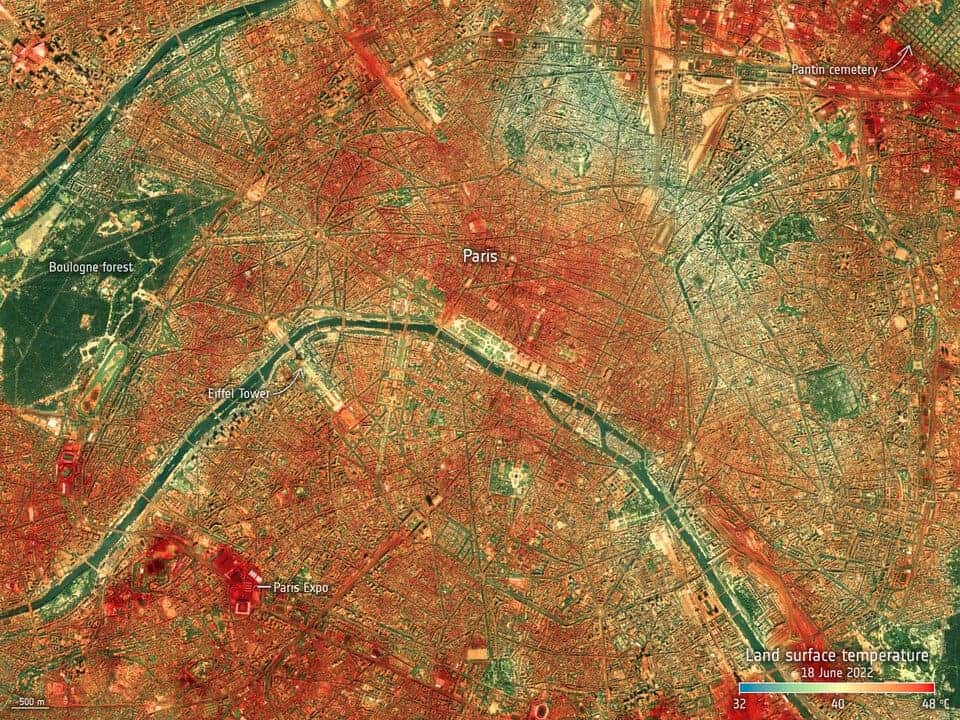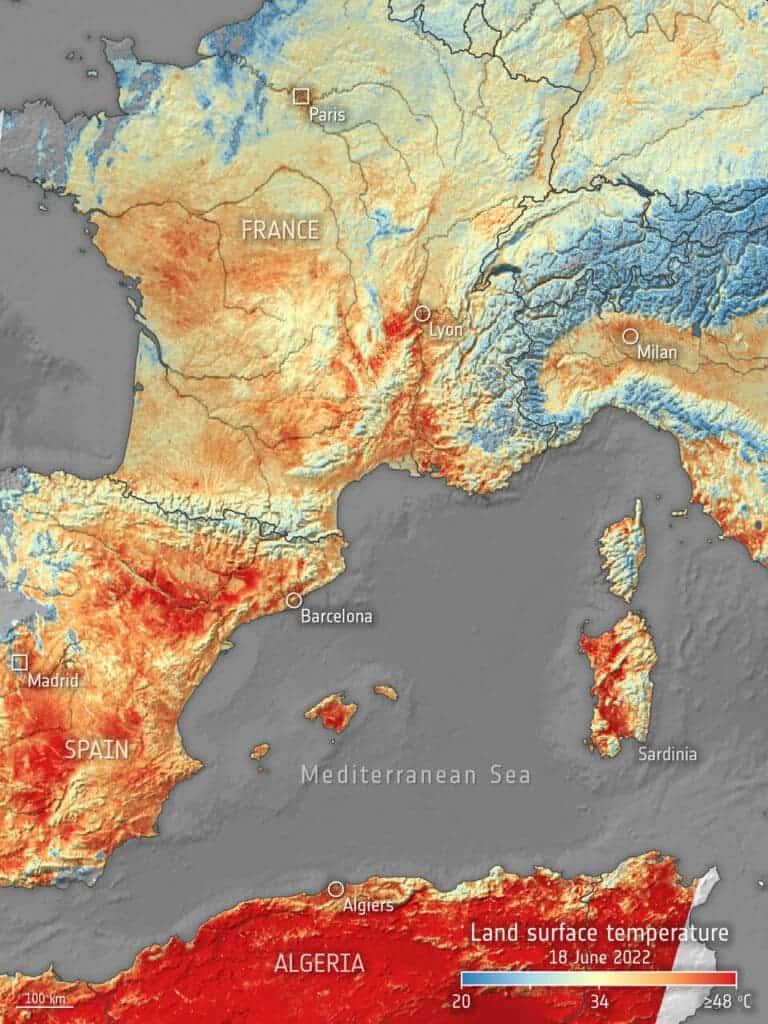Temperatures have been rising around the world and breaking records almost everywhere. A third of the US was under excessive heat warmings weeks ago as domes of high pressure, or heat domes, trapped hot air. Things aren’t better across the Atlantic, with temperatures also breaking records in Madrid, Paris, and Rome, among others.
Now, an instrument carried on the International Space Station (ISS) has captured the recent temperature extremes for many major European cities. While these images offer little consolation for those coping with the heat, they could help to mitigate the effects of future heat waves by better managing and planning water resources.

This instrument, called ECOSTRESS, is helping in the development of the new Copernicus Sentinel satellite – the Land Surface Temperature Monitoring (LSTM) mission. The European Space Agency (ESA) is using ECOSTRESS to simulate the data that will be eventually returned by LSTM, which will measure the temperature of the land surface.
The LSTM could be a game-changer for urban planners and farmers around the world, ESA argues, as it has high-resolution on its thermal infrared sensor for land-surface temperature. It will help us better understand and respond to climate variability, manage water resources for agricultural production and address land degradation. The problem is, it’s not really good news.
Extreme heat waves
The world has already warmed by about 1.1 degrees Celsius since the Industrial Revolution, and temperatures are expected to keep increasing – unless greenhouse gas emissions are cut drastically. This brings a whole array of consequences for everyone, including more frequent, longer, and more intense extreme heatwaves.
Heatwaves aren’t just something annoying we have to cope with but can in fact be very dangerous, leading to illness and death, especially among older adults and the very young. Excessive heat has been linked with high blood pressure, asthma, and kidney failure. It also disrupts sleep, alters our motor functions can lead to depression.
June was a harsh reminder of what’s in store as climate change kicks in. For several consecutive days, many European cities had air temperatures above 40 degrees Celsius. But Europe wasn’t alone in this. Tokyo had air temperatures above 35 degrees Celsius for five consecutive days – the worst run of hot weather in June since records started in 1875.
The images captured by ECOSTRESS show land-surface temperatures in Milan, Paris, and Prague on June 18th in the early afternoon. For comparison, the wider view of land-surface temperature in Europe below was taken by the Copernicus Sentinel-3 mission on 18 June. ECOSTRESS images have a much higher spatial resolution than Sentinel-3.

Land-surface temperature is a measure of how hot the surface would feel to touch. Scientists monitor this because the warmth rising from the planet’s surface influences weather and climate patterns. These measurements are also relevant for farmers to evaluate how much water their crops need and for urban planners to improve heat mitigating strategies.
“ECOSTRESS continues to image the impact of extreme heat in cities around the world including the recent heatwaves that shattered records in both Europe and the USA. These data can be used to identify hotspots, vulnerable regions, and assess the cooling impacts of heat mitigation approaches,” Glynn Hulley, a NASA scientist, concluded in a statement.
Having a better understanding of temperature variation is important for improving our understanding of how climate change strikes — but it won’t help us address climate change without action.









